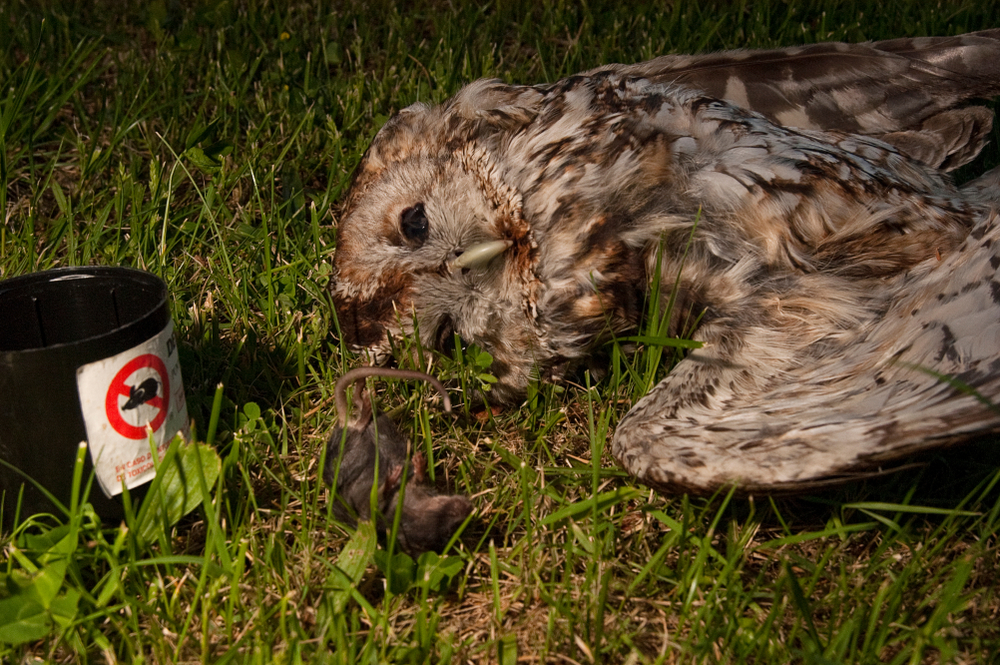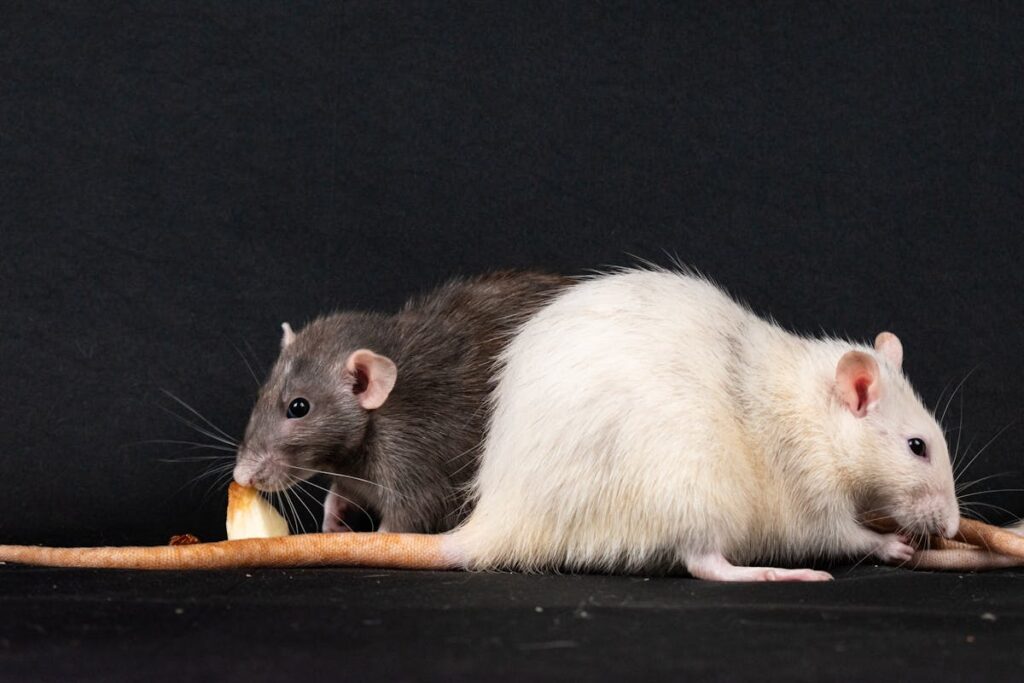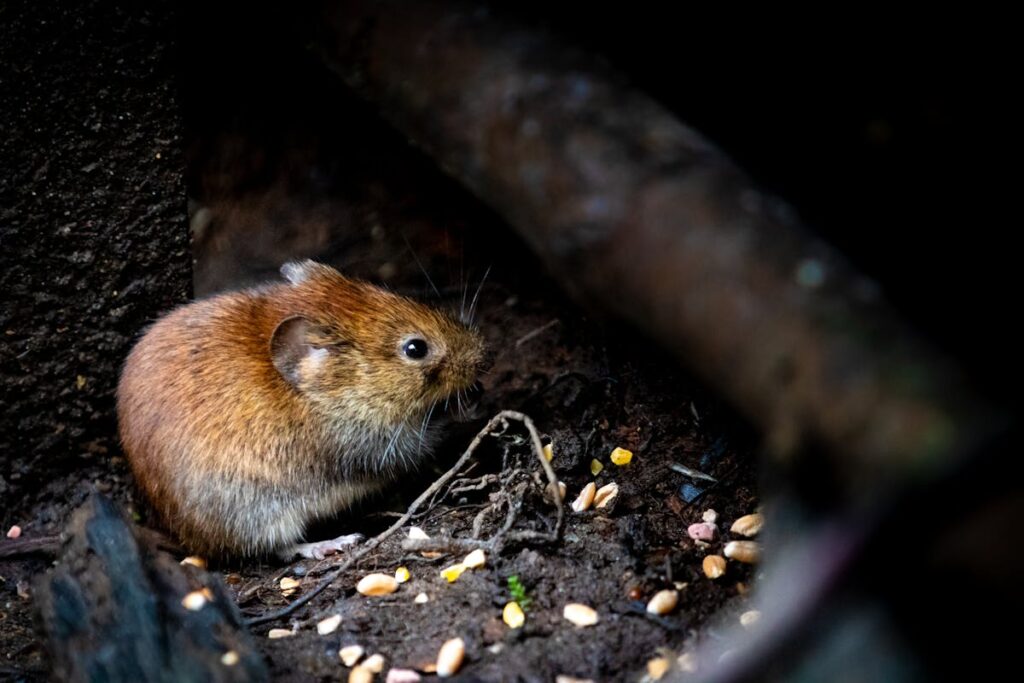Your cart is currently empty!
Poisons Used to Kill Rodents Have Safer Alternatives

Rodents are a nuisance, but the poisons used to control them may be causing more harm than the pests themselves. Second-generation rodenticides promise quick results across cities, farms, and suburban neighborhoods, yet their reach extends far beyond the intended targets. Hawks, owls, foxes, and even household pets are falling victim, not to mention the unseen risks to children.
Despite growing evidence of their dangers, these potent poisons remain in circulation, slipping through regulatory loopholes and wreaking havoc on ecosystems. The good news is that safer alternatives offer effective rodent control without unintended casualties.
How Second-Generation Rodenticides Work and Why They Are Dangerous
Second-generation rodenticides (SGARs) act by accumulating in rodents’ bodies over time. These poisons block the rodents’ ability to clot blood, which leads to internal bleeding. Symptoms develop slowly, allowing the rodent to suffer for days or weeks before dying.
Rodents that ingest SGARs may become weak and lethargic, making them easy targets for predators. Hawks, owls, foxes, and other animals that feed on these poisoned rodents are at risk of ingesting the toxic substance. Once consumed, the poison passes through the predator’s body, causing similar internal bleeding and prolonged death. This effect is hazardous in ecosystems, where toxins accumulate across the food chain.
In contrast to first-generation rodenticides, which have a quicker, more direct action, SGARs leave a longer-lasting poison trail. This delay is what makes them so hazardous. Predators are more likely to encounter poisoned rodents, increasing their chances of consuming them and suffering the same fate.
Wildlife Experts Sound the Alarm on Secondary Poisoning

Veterinarians and wildlife experts have raised alarms over the rising number of birds of prey and predators suffering from internal bleeding after eating poisoned rodents. Studies show that many animals, including great horned owls, red-tailed hawks, mountain lions, and even endangered fox species, tested positive for rodenticide poisoning during necropsies.
As these predators feed on rodents exposed to second-generation rodenticides, they unintentionally ingest the same deadly chemicals. The resulting poisoning causes them severe harm, often leading to death. Wildlife experts argue that secondary poisoning is a growing threat to local ecosystems, especially for species already vulnerable due to habitat loss and other environmental pressures. The poison’s far-reaching effects highlight a dire need for safer pest control practices that protect wildlife.
California and New York are two of the few states that have investigated the issue. The Audubon Magazine stated, “Rodenticides showed up in 79 percent of fishers (one fisher even transferred poisons to her kit via her milk), 78 per cent of mountain lions, 84 per cent of San Joaquin kit foxes, and, in San Diego County, 92 per cent of raptors. In New York rodenticides were found in 49 percent of 12 species of necropsied raptors. For great horned owls, the figure was 81 per cent.
Global Impact of Rodenticides on Raptors and Wildlife

The contamination caused by rodenticides is a global concern, with alarming effects on wildlife worldwide. In Great Britain, necropsies revealed rodenticides in 92 per cent of red kites, 91 per cent of barn owls, and 80 per cent of kestrels. Similarly, in Denmark, rodenticides were detected in 73 per cent of all necropsied raptors. In six weeks ending on January 23, 2012, second-generation rodenticides led to the deaths of approximately a dozen spotted eagle owls in Port Elizabeth, South Africa. Rodenticides have also been found to affect raptors in Australia, New Zealand, Ireland, and Canada.
Although Canada faces far fewer rodent problems than many other countries, raptors there show equally high levels of rodenticide contamination. This phenomenon puzzles Pierre Mineau, a leading ecotoxicologist who retired from Environment Canada’s National Wildlife Research Centre in 2012. He said, “There are high levels of exposure in every species we’ve looked at. Not just in the rodent eaters, but in the accipiters [which primarily prey on birds]. I wouldn’t have expected that. It’s still a mystery how this poison is moving through terrestrial food chains. Insects may be picking it up and passing it to the songbirds that consume them. That might explain the accipiter poisoning connection.”
While monitoring data from California is relatively recent, efforts in New York have largely ceased, with little research conducted elsewhere. As a contaminants specialist with the U.S. Fish and Wildlife Service, Nancy Golden stated, “If you look back at the incidence reports, there are big peaks, and then the funding gets cut off by California and New York.” However, both states have brought attention to the public health threat posed by rodenticides and their harmful effects on non-target species.
Rodent Poisons Are a Hidden Threat to Children and Pets
Rodenticides pose a serious risk to children and pets, far beyond the initial purpose of controlling rodents. Each year, the Centers for Disease Control and Prevention report thousands of cases of rodenticide poisoning in children. Many of these cases occur when children accidentally ingest the poison or come into contact with it while playing in areas where it has been placed.
Pets are also at risk. They may consume poisoned rodents or directly ingest the bait if it’s left out. Even when placed in areas that seem out of reach, rodents often carry the bait to other parts of the home, spreading the danger. Ingesting even small amounts of rodenticide can lead to severe health issues for pets and young children, sometimes causing irreversible damage or death.
A four-year Environmental Protection Agency (1999–2003) survey found that at least 25,549 children under six ingested enough rodenticide to experience poisoning symptoms. About 15,000 calls per year are made to the CDC from parents whose children have consumed rodenticides. Even when efforts are made to place bait in areas inaccessible to children, rodents can carry it throughout the home and property, increasing the risk of exposure.
The Environmental Impact Extends Beyond The Predators

Rodenticides are not limited to affecting predators alone. Researchers have found these toxins in waterfowl, songbirds, and even insects, indicating they spread throughout ecosystems. Scientists are still working to understand the full extent of this contamination, but early evidence shows that no part of the food chain is immune. As these poisons travel up and down the food web, they can potentially harm various species, disrupting entire ecosystems in ways that are still not fully understood. The broader environmental impact may be far more significant than initially thought.
Why Second-Generation Rodenticides Remain Widely Available
SGARs continue to be available despite the Environmental Protection Agency (EPA) ‘s ban on public use. Legal loopholes and remaining stockpiles allow these toxic products to stay on the market. Large manufacturers have resisted the ban, keeping the distribution of these dangerous rodenticides active. Their resistance prolongs the environmental harm caused by these substances, creating ongoing risks for wildlife, pets, and even humans.
U.S. Fish and Wildlife Service contaminants specialist Michael Fry makes this point about the widespread use of second-generation rodenticides by people oblivious to the dangers. He said, “One good reason for using first-generation poisons is that if you do have a problem, like developing tolerance, you want a backup. If you go in with your strongest thing first, there’s no backup.”
Safer Alternatives Can Control Rodent Populations Without Harming Other Wildlife

Experts recommend several effective alternatives to control rodent populations while protecting non-target species:
- Integrated Pest Management (IPM) combines sanitation, exclusion, and traps to manage rodent populations over time without resorting to toxic substances.
- First-Generation Rodenticides: When used correctly, these are less toxic to other animals than second-generation options, providing a safer solution.
- Mechanical Traps: Snap and electronic traps quickly kill rodents without spreading poison into the environment, preventing secondary poisoning.
- Natural Predators: Encouraging predators like owls and hawks can naturally regulate rodent populations, offering an eco-friendly control method.
Future Without Harmful Rodenticides
Stronger policies and informed choices can help reduce the use of second-generation rodenticides. Some regions have already restricted these toxins, but enforcement gaps allow them to remain in circulation. Raising public awareness about the risks to wildlife and promoting safer pest control methods can drive further change. Research into non-toxic alternatives continues to offer promising solutions. Supporting efforts to ban these harmful substances entirely will protect ecosystems and prevent unnecessary poisoning of non-target species.
